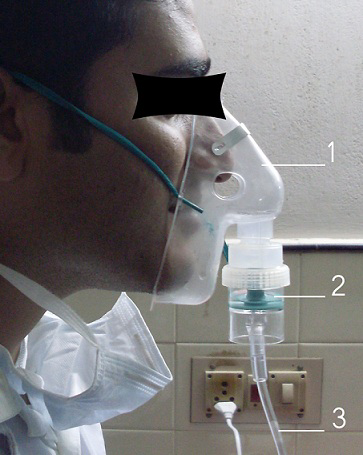
By Myupchar, CC BY-SA 4.0, Wikimedia
Asthma is a disease of the airway which causes the windpipes to narrow or close up thereby preventing air entry into the lungs. The patients classically develop a cough, a whistling sound called wheezing, breathlessness, and tightness of the chest. According to the World Health Organisation (WHO);
Asthma affected an estimated 262 million people in 2019 and caused 455 000 deaths.
The cause of this disease is usually a combination of the genetic makeup of an individual and the environment. The environment here is very important because that provides the trigger for asthma. Understanding a patient's trigger is the key and bedrock of managing asthma and avoiding the frequent occurrence of asthma attacks.
Many factors trigger asthmatic attacks in persons who are genetically predisposed to it. Some of these factors include: Allergens like dust mites, molds, cockroaches, animal dander, pollen, etc. Viral respiratory infections, tobacco smoke, extreme emotions, weather changes, exercise, strong perfumes, and some foods, drugs, etc, are all trigger factors for asthma.

By 7mike5000 - Own work, CC BY-SA 3.0, Wikimedia
Therefore, to successfully manage this disease, the trigger for that particular patient must be identified and avoided. When this is not done, there will always be asthma attacks each time the person gets exposed to any of the trigger factors for the patient.
THE PATHOPHYSIOLOGY OF ASTHMA
For a better understanding of this disease, let us look at how it occurs.
When an individual who inherited the gene that predisposes them to asthma comes in contact with any of those triggers, they cause the release of some molecules called the inflammatory cells and mediators. These include the mast cells, basophils, neutrophils, eosinophila, platelets, Th2 cells, cytokines, chemokines, histamine, leukotrienes, etc. These result in an inflammatory reaction in the airway. This goes on over time. This causes the airway to be hyperesponsive. The excess production of mucus and airway remodeling all sum up to the narrowing of the airway.
Due to the narrowing of the airway, air cannot go into the lungs and the patient becomes breathless with a cough and other symptoms as I mentioned above.
This narrowing of the airway is similar to what happens in Chronic Obstructive Pulmonary Disease (COPD) which I discussed in one of my previous posts. But the difference between asthma and COPD is that the airway narrowing in asthma is reversible with drugs called bronchodilators while the airway narrowing in COPD is irreversible.
Therefore, through a patient-doctor partnership asthma can be treated and properly controlled.
TREATMENT
Medications used for asthma are of two groups; the relievers and the controllers. The reliever is used to achieve a quick dilation of the airway during asthma attacks. A common drug in this class that we all know is Salbutamol sold under the trade name of Ventolin, Asthavent, etc. These are for quick relief of asthma symptoms. Systemic glucocorticosteroids, Ipratropium bromide, short-acting theophylline, etc can also be used as relievers.

By Тетяна Фіонік - Own work, CC BY-SA 3.0, Wikimedia
The controllers are long-term medications used to keep asthma under control. Drugs in this group include Inhaled glucocorticosteroids, long-acting Beta 2 agonists, and others. These drugs are good in the management of asthma but remember, the most important is to IDENTIFY AND AVOID THE TRIGGER.
ACUTE SEVERE ASTHMA
This is the severe occurrence of asthma attacks that most times become unresponsive to the usual drugs. It is a medical emergency and should be managed immediately.
Acute severe asthma occurs when there is a severe narrowing of the airway which does not respond to the normal reliever drugs. The patient develops worsening breathlessness with sweating, unable to complete a sentence in one breath, elevated respiratory rate and heart rate, audible wheezing, confusion, hyper-inflated chest, etc.
In life-threatening asthma, patients have even a worse situation than acute severe asthma. Here there is almost no air entry into the lungs. The patient has a silent chest, low respiratory and heart rates, bluish coloration of the skin and membranes, exhaustion, etc.
These asthma exacerbations must be managed immediately in the hospital using salbutamol, intravenous corticosteroids, Ipratropium bromide, intramuscular epinephrine, etc. This is done in a step-wise approach with the patient reassessed after every step. In very severe cases, the patient has to be moved to the intensive care unit for assisted ventilation.

By Suraj at Malayalam Wikipedia - Public Domain, Wikimedia
In Conclusion, asthma is a very common disease amongst us and a common cause of school and work absenteeism when not properly controlled. It is also a common disease in children. Asthma is caused by an interplay between genetic makeup and environment (triggers). To properly manage this condition, we must break the chain by identifying the triggers and avoiding them, as well as adequate drug compliance.
Thanks so much for reading and do have a lovely weekend ahead.
For references and further information on asthma, please visit:




